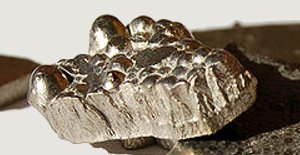Lovely cobalt is number 27 on the periodic table and Co is the symbol. Unfortunately pure cobalt does not exist in nature, but rather compounds of cobalt. The main way to get cobalt compounds is through the by-product of copper and nickel mining. Cobalt compounds has been used way back dating to 1400 B.C. There have also been other sources that say cobalt compounds are used earlier.
Compounds of cobalt are used in glasses and glazes for its color; blue. Even though cobalt compounds were in use in the past, Georg Brandt, a Swedish chemist was the one to analyze the dark blue pigment in copper ore; therefore; discovering this new element in 1735. Both copper and cobalt are blue, but cobalt is a deeper blue and Brandt showed this. Copper and cobalt were confused for each other in the past. Before George Brandt, cobalt was known as kobold ore, meaning goblin or evil spirit, to miners. Some of the products that use cobalt are glass, pottery, glazes, ceramics, paints, superalloys, and other things.
MSDS Sheet of Cobalt
http://www.chemistryexplained.com/elements/A-C/Cobalt.html#b



